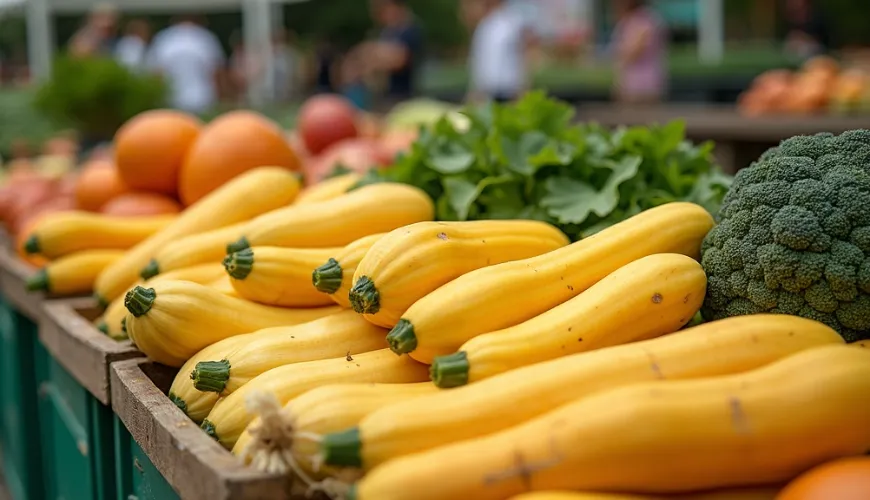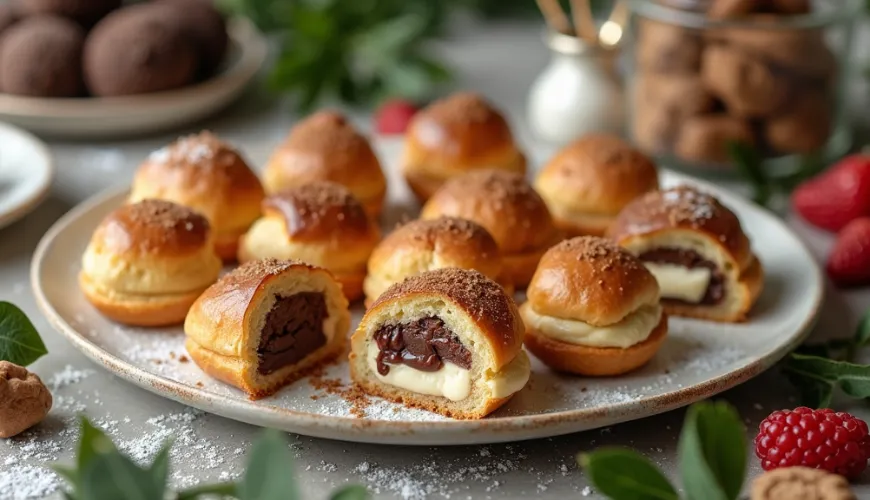
The Secret to Perfect Profiterole Dough You Need to Know

The Magic of Profiteroles - Sweet Balls that Charmed the World
When you hear "profiterole," many people think of delicate, light pastry filled with vanilla cream, drizzled with chocolate glaze, and served on a festive platter as the sweet conclusion to a gourmet evening. But it's not just a dessert – profiteroles are small works of art that combine tradition, taste, and the joy of baking. That's why they are finding their place in Czech households, often inspired by famous cookbooks like the classic “Cookbook for a Daughter."
Profiteroles, or "profiteroles" in French, originate from a cuisine that has given the world countless iconic desserts. Their foundation is choux pastry, which is also the basis for cream puffs, éclairs, or eclairs. The difference, however, lies in size and serving. While a cream puff is often a Czech staple for celebratory trays, profiteroles are served as an elegant mini dessert that easily competes with pastries from luxurious bakeries.
The Secret of Choux Pastry
To understand why profiteroles are so unique, it's good to start from the very beginning – with the dough. Choux pastry is not exactly for beginners, but with a little patience and the right recipe, anyone can master it. The basic ingredients are simple: water, butter, flour, and eggs. But it's their combination and correct technique that create a dough that puffs up during baking, forms a hollow interior, and remains beautifully crisp on the outside.
The dough is first "cooked" – meaning the flour is poured into boiling water with butter and stirred continuously until a smooth, compact mass forms that doesn't stick to the sides of the pot. The dough is then allowed to cool slightly, and when it's lukewarm, eggs are gradually beaten in. The resulting mixture is then piped or shaped onto a baking sheet and baked at high temperature to form the typical shape of small balls – the future profiteroles.
And why is it so important not to open the oven during baking? If the oven door is opened in the first phase, the dough might lose the necessary steam, leaving a flat cookie instead of a puffed-up ball. A small detail, but crucial for the result.
Profiterole Recipe
There are dozens of variations on the profiterole recipe – from traditional French versions with vanilla cream to modern creations with pistachio, salted caramel, or even savory fillings. But if we draw inspiration from cookbooks passed down in Czech families, like “Cookbook for a Daughter" by Jana Florentýna Zatloukalová, we often start simply – with vanilla cream or whipped cream and chocolate glaze.
Florentýna's cookbook offers not only recipes but also the philosophy of home cooking. She focuses on making every meal meaningful, comprehensible, and most importantly, accessible even to those just getting familiar with the kitchen. And profiteroles are a beautiful example of a recipe that may seem complex at first glance, but when broken down into simple steps, becomes a culinary routine that brings joy.
One Dessert, a Thousand Possibilities
So what is the magic of profiteroles? Besides their undeniable taste, it's the fact that anyone can customize them according to their taste and mood. The basic version includes vanilla cream, but who could resist light Parisian whipped cream or delicate mascarpone mousse with raspberries? And what about chocolate ganache, homemade caramel, or fruit sauce?
One mother shared her experience with profiteroles at a children's party. While classic cakes were almost untouched, the small profiteroles filled with cream and drizzled with both white and dark chocolate disappeared within five minutes. The children took them by twos, by threes, and even requested "those little sweet balls" to take home. And even better – the mother prepared them a day in advance, decorated them in the morning, and had the whole day free to prepare for the party. A dessert that is beautiful, tasty, and practical? That's something you don't see every day.
How to Make Homemade Profiteroles Step by Step
While many online recipes differ in details, the basic process remains similar. For better clarity, here's a simple list of how to master profiteroles at home:
Basic Profiterole Recipe:
- Prepare the dough: 250 ml of water, 100 g of butter, a pinch of salt, 150 g of plain flour, 4 eggs.
- Cook the dough: Bring water with butter and salt to a boil in a pot, add flour, and stir until the dough doesn't stick to the sides.
- Let it cool, then gradually beat in the eggs (one at a time).
- Shape balls on a baking sheet – ideally using a pastry bag.
- Bake at 200 °C for about 20–25 minutes until golden and puffed up (do not open the oven!).
- Let them cool and fill as desired – with cream, whipped cream, mascarpone…
- Decorate with chocolate, sugar glaze, or fruit topping.
Small tricks, like piercing the bottom of the pastry after baking (to release steam and keep the dough crispy), can significantly affect the outcome. And there's a wonderful rule here – the more one is in contact with the dough, the better they learn to recognize when it's ready, how it reacts, and when it's "just right."
Profiteroles as a Part of Home Tradition
In many families, such recipes become part of traditions. Perhaps even today, someone is pulling out a yellowed notebook from grandma, where a handwritten recipe for "cream puffs" can be adapted into profiteroles. Or flipping through a modern cookbook where each recipe has a small comment or tip – what if I don't have a pastry bag? What if the dough is too runny?
Profiteroles thus become not only a sweet treat but also a little adventure in the kitchen. They teach patience, precision, and creativity. And at the same time, they bring joy – because few desserts evoke as much excitement as a festive plate full of shiny, fluffy balls.
And perhaps the most beautiful – profiteroles are one of those recipes that attract cooking across generations. Grandma prepares the dough, mom whips the cream, the daughter pipes the balls onto the sheet, and the son eagerly tastes them. And who knows – maybe that's how a new culinary tradition begins, continuing into the future.
As Julia Child once said: "Never trust a chef who doesn't like butter." And in the case of profiteroles, it holds true – the more love, the better the result.

